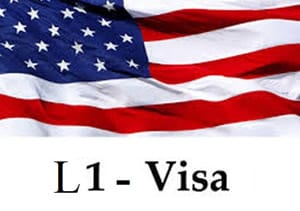
What are the normal time limits on L-1A and L-1B status?
The L-1 visa is used by companies to transfer employees to the United States to work in managerial, executive or specialized knowledge roles. The employee must be transferred from a company abroad that has a qualifying relationship with the U.S. company. If the employee is coming to open up a new office in the U.S., they can only be granted the visa for one year initially. If the employee is coming to work at an established company that has been doing business for more than one year, they may be granted the visa for up to three years. Normally, L-1A executives & managers may spend up to seven years total in the U.S. and L-1B specialized knowledge employees may spend up to five years in the U.S. Once they reach this limit they must change to another status or leave the U.S. for at least one full year before they can return in L (or H) status.
What is the intermittent or commuter L-1 visa?
Some L-1 visa holders are exempt from the five and seven year limits and may continue to renew their L-1 visas indefinitely. This exception applies to people who live outside the U.S. and whose jobs in the U.S. are seasonal, intermittent or add up to less than six months each year. Additionally, the limits do not apply to people who live outside the U.S. and commute to the U.S. on a regular basis for part-time employment. The burden is on the employer to show that the applicant meets these criteria and is therefore eligible to indefinitely extend the L-1 status.
Who qualifies for the intermittent or commuter L-1 visa?
In order to qualify for the intermittent L-1, the L-1 visa holder cannot spend more than 6 months in the U.S. and must maintain their foreign residence outside the U.S. If the employment suddenly becomes full-time rather than part-time, this may impact the applicant’s ability to continue extending the L-1 visa. In order to prove that the applicant is eligible for intermittent or commuter L status, the applicant may be asked to provide records of employment abroad, tax returns and/or arrival and departure records showing how much time was spent in the U.S. each year.
Can the L-1 visa holder bring their dependents to the U.S.?
People on intermittent or commuter L-1 status can sponsor their spouse and minor children for L-2 dependent visas, however they should be careful that they are not “parking” their family members in the U.S. full time, as this may impact the ability of the dependents to renew the L-2 visa past the five or seven year limit. In 2006 USCIS issued a memo reiterating that the purpose of the dependent visas is to allow the dependents to join the principal visa holder in the U.S. USCIS indicated that they can limit the visas of L-2 dependents if the L-1 visa holder is spending very little time in the U.S. A good general rule is that the family members’ time in the U.S. should generally reflect the L-1 visa holder’s time in the U.S. (although family members are not required to leave the U.S. for every trip taken by the L-1 visa holder). For example, if the L-1 visa holder only works in the U.S. in the winter months and then returns to Canada for the rest of the year, the dependents would be expected to live in the U.S. in the winter months but depart around the same time that the L-1 visa holder left to return to Canada.
Can Canadians renew their commuter or intermittent L-1 visas through CBP?
Given Canada’s proximity to the U.S., it is common for Canadian nationals to live in Canada and travel to the U.S. on intermittent or commuter L-1 visas for part-time or intermittent/seasonal employment. Canadians are visa exempt, which means they can apply for their initial L-1 visas at a port of entry with U.S. Customs and Border Patrol (“CBP”), rather than applying through USCIS. Previously, Canadians were also permitted to apply for L-1 renewals at ports of entry, however in 2019, CBP began refusing to process L-1 renewals at the border and has insisted that Canadians must apply for L-1 renewals through USCIS. L-1 intermittent or commuter applicants were specially exempted from this new rule and should still be able to process renewals at the border with CBP, however the applicants must make it clear that they qualify for L-1 intermittent or commuter status, otherwise CBP may insist that the L-1 renewal must be adjudicated through USCIS.